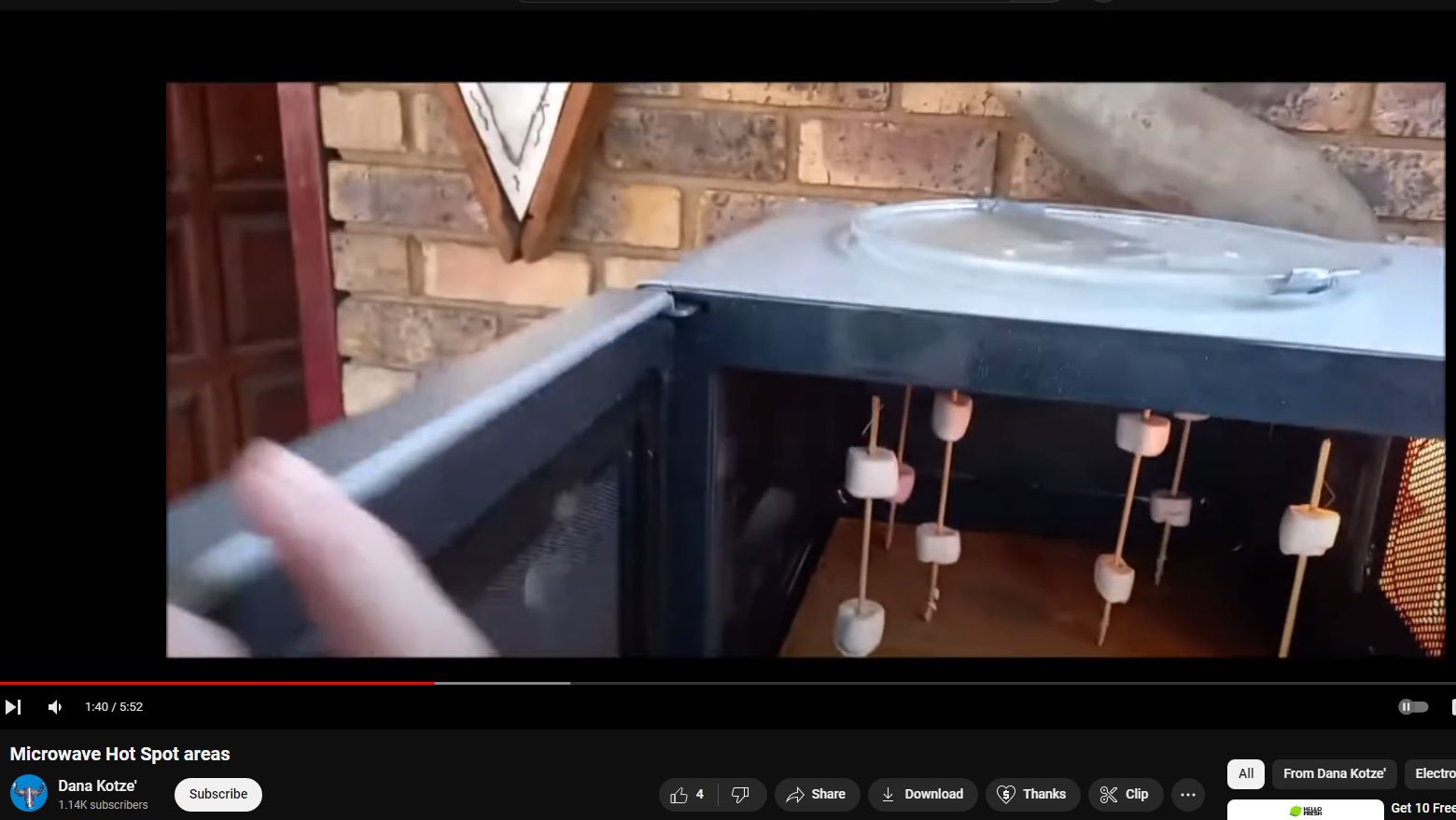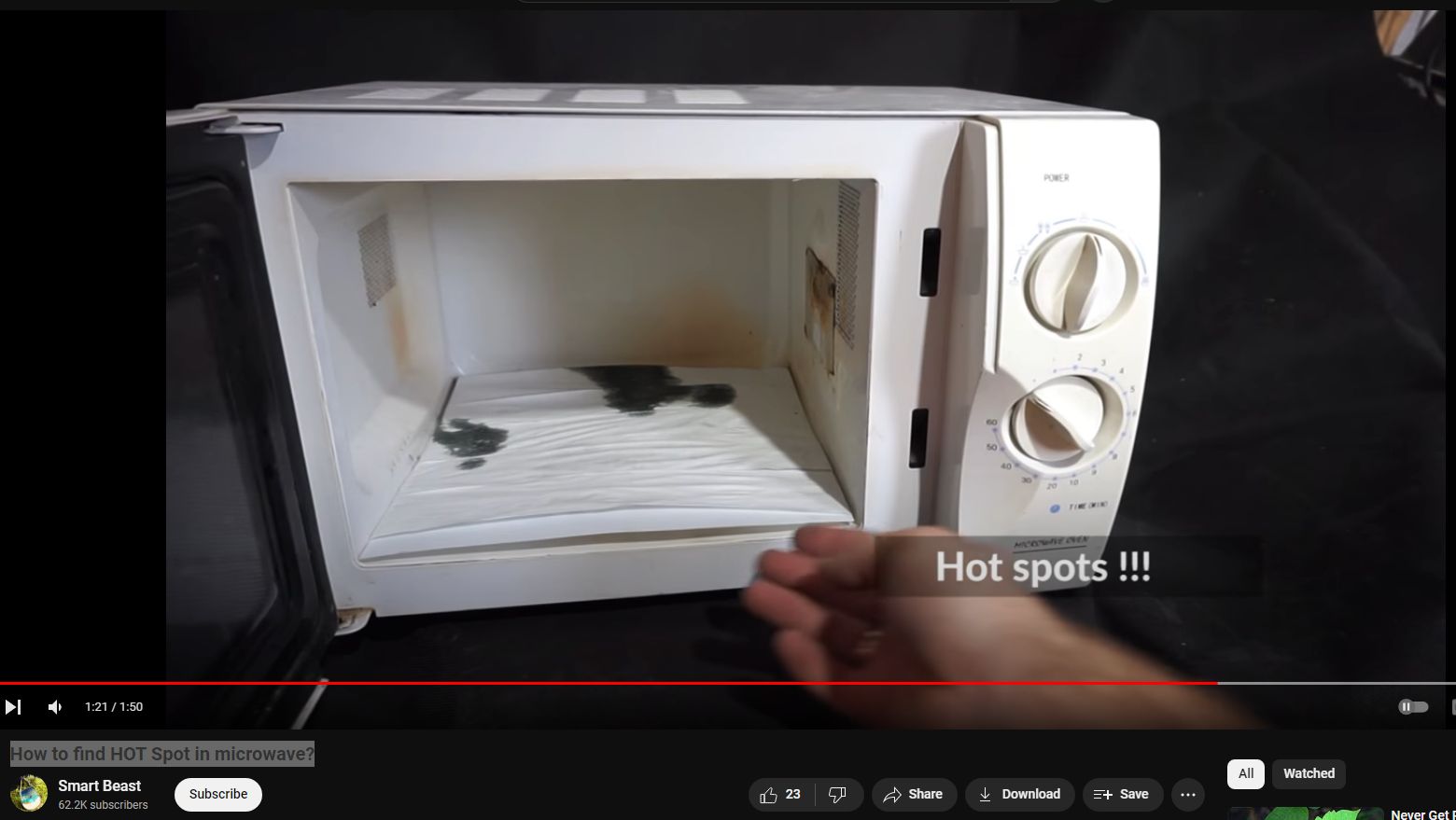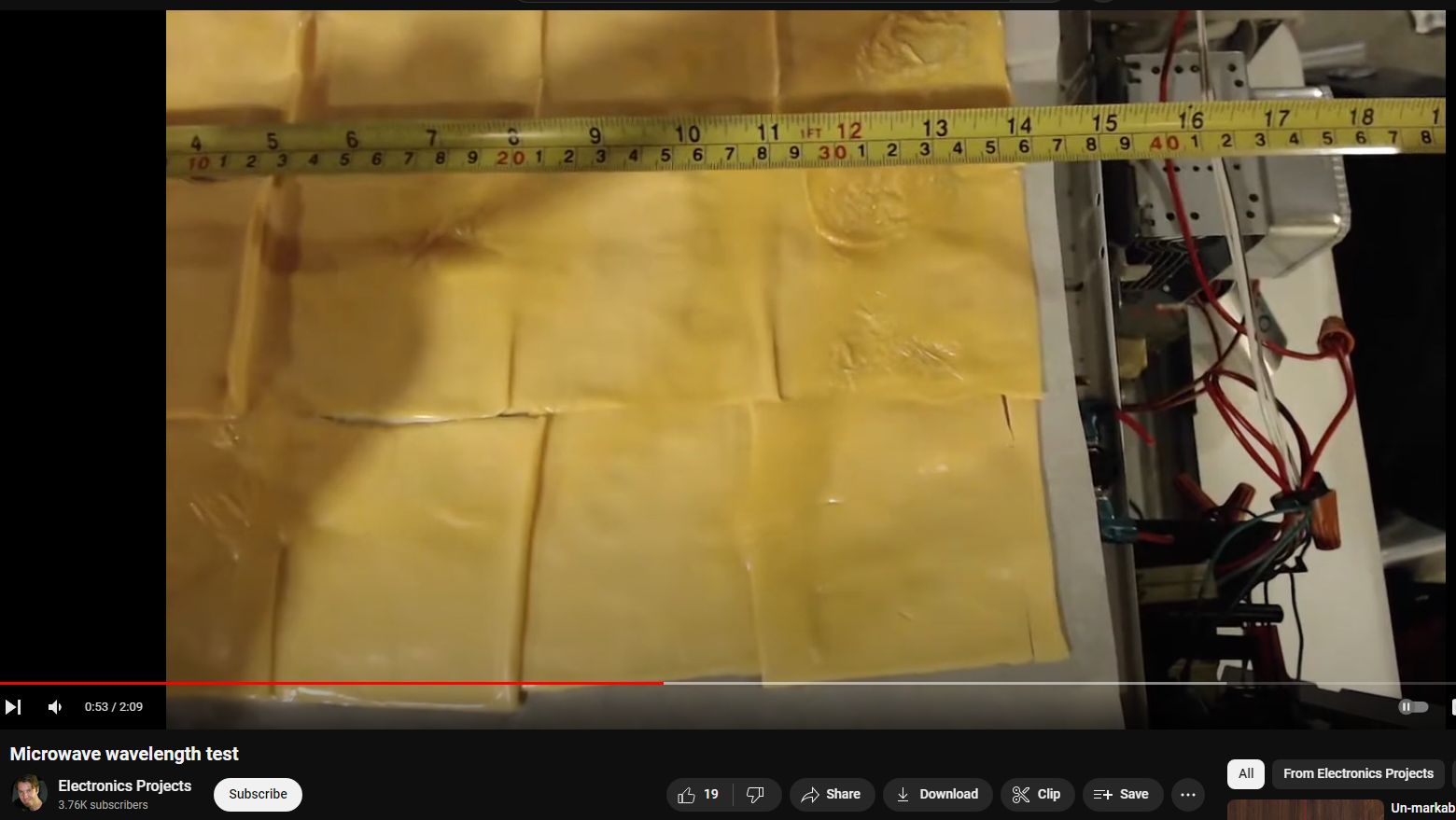Field Interference of Microwave Directed Energy Weapons
Wave and material interferences cause “hot spots” and “cold” or untouched / unaffected parts. The field effects and interference patterns of microwave millimeter wave directed energy weapons are complex and highly dependent on the target’s geometry, material properties, and physical movements. The superheating, deformation, and disintegration of metal targets under these energy waves lead to intriguing and sometimes perplexing damage patterns.
Microwave wavelengths can be determined by examining ‘hot spots’ in cooked foods or materials inside a microwave oven. This is why the food plate spins, to help more-evenly distribute the heating into the target.
Examining field interference inside a microwave oven is directly relevant and revelatory.
Microwave Hot Spot areas

How to find HOT Spot in microwave?

Microwave wavelength test


The Field Effects and Interference of Millimeter Wave Microwave Directed Energy Weapons
Physics of Microwave Directed Energy Weapons
Introduction
Microwave millimeter wave directed energy weapons (DEWs) represent a cutting-edge technology in modern warfare and industrial applications. These weapons utilize highly concentrated beams of electromagnetic energy to target and neutralize threats. Understanding the field effects and interference patterns of these energy waves is crucial, especially when considering how metal target geometries and physical movements impact the behavior and effectiveness of these weapons. This blog post delves into how these energy waves interact with metal targets, causing superheating, deformation, disintegration, and the peculiar anomalies observed in such interactions.
How Microwave Millimeter Wave DEWs Work
Microwave millimeter wave DEWs emit beams of electromagnetic energy in the microwave and millimeter wave frequency ranges. These beams can be precisely directed to disrupt or destroy targets by inducing thermal and mechanical stresses. When these high-energy waves strike a target, they cause rapid heating, leading to a range of destructive effects such as melting, vaporization, and structural failure.
Interaction with Metal Targets
1. **Perturbation by Geometries**
The interaction of microwave millimeter waves with metal targets is highly dependent on the target’s geometry. Metal surfaces can reflect, absorb, or scatter the energy waves, creating complex interference patterns. Sharp edges, corners, and irregular shapes can lead to localized hotspots where the energy is concentrated, causing intense heating and potential melting at these points.
2. **Effect of Physical Movement**
As the metal target moves, the angles of incidence and reflection change, altering the distribution of the energy waves. This dynamic interaction means that the energy deposition on the target is not uniform, leading to varying degrees of heating and damage across different parts of the target. For instance, a rotating metal plate might experience alternating periods of intense heating and relative cooling, depending on its orientation relative to the energy beam.
Superheating, Deformation, and Disintegration
1. **Superheating**
When exposed to microwave millimeter waves, metal targets can rapidly reach high temperatures, far exceeding their melting points. This superheating effect causes the metal to weaken structurally, leading to deformation and potential failure.
2. **Deformation**
As the metal heats up, it undergoes thermal expansion, which can lead to significant deformation. This deformation can change the geometry of the target, further affecting the way the energy waves interact with it. Warped or buckled surfaces can create new interference patterns, leading to areas of concentrated heating that can exacerbate the deformation.
3. **Disintegration**
In extreme cases, the metal may vaporize or disintegrate. This process is influenced by the energy intensity, duration of exposure, and the material properties of the target. As the metal disintegrates, the resulting debris can scatter the energy waves, leading to further complex interactions and unpredictable damage patterns.
Anomalies in Damage Patterns
One of the most intriguing aspects of microwave millimeter wave DEWs is the seemingly anomalous damage patterns they can create. For example, gusset plates—a key structural component in many metal frameworks—can exhibit varying degrees of damage within the same structure.
1. **Selective Disintegration of Nuts and Bolts**
Microwave millimeter wave energy can cause some nuts and bolts to disintegrate completely while others remain unaffected. This can be attributed to several factors:
– **Geometric Variations**: Slight differences in the positioning and orientation of nuts and bolts can lead to significant variations in the energy absorption and heating. Bolts that are directly exposed to the energy beam or located at points of constructive interference may disintegrate rapidly, while others in shadowed or less exposed areas remain intact.
– **Material Properties**: Variations in the material composition and manufacturing inconsistencies can result in differing responses to the energy waves. Bolts made of slightly different alloys or with varying degrees of surface roughness can heat up and disintegrate at different rates.
2. **Sporadic Damage**
The sporadic nature of damage to gusset plates can be explained by the interference patterns created by the energy waves. Constructive and destructive interference can lead to hotspots and cold spots, respectively. In areas of constructive interference, the energy concentration is high, causing rapid heating and potential disintegration of bolts and nuts. Conversely, areas of destructive interference might experience little to no heating, leaving some bolts and nuts unaffected.
Conclusion
The field effects and interference patterns of microwave millimeter wave directed energy weapons are complex and highly dependent on the target’s geometry, material properties, and physical movements. The superheating, deformation, and disintegration of metal targets under these energy waves lead to intriguing and sometimes perplexing damage patterns. Understanding these interactions is crucial for developing effective applications of DEWs and for mitigating their effects on critical infrastructure. As this technology continues to evolve, further research will be essential to fully comprehend and harness the power of directed energy weapons.